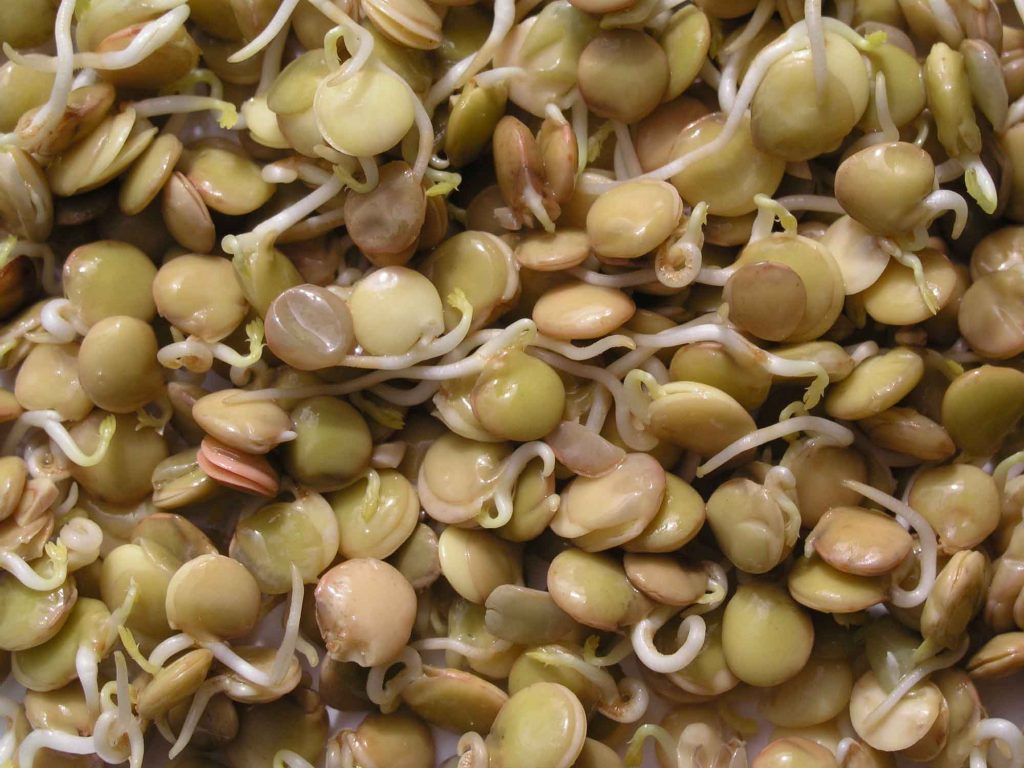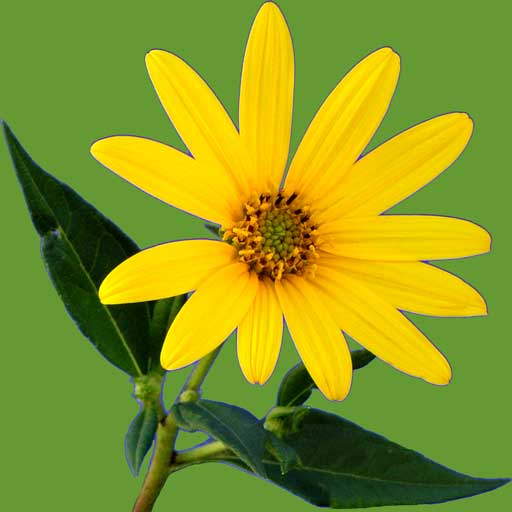Lens esculenta F. Fabaceae
Description and Sprouting
An annual bush, to 40-60cm; lanceolate-shaped leaflets form along the stems; lavender or white pea flowers are followed by small, flat pods that contain 2-3 seeds, 1/2cm diameter. Different varieties of lentils may be in varying shades of brown and green. However, they are all lens shaped. For this reason, it is easy to see how the botanical classification of ‘lens’ was given.

Easy to sprout, lentil seeds are soaked 6-12 hours and sprouted in a jar, sprouter or bag. Rinse seed 2-3 times a day and use sprouts when 1/2 -2cm long. Do not use hulled seed for sprouting, as seed may be split and the germ embryo injured. Soaking lentil seeds for 12 hours and then sprouting 3-4 days has been found to completely remove all haemagglutinin and amylase inhibitor. Lentils are sometimes added to a mixture of small, legume seed varieties, for sprouting and the mixture looks and tastes great, when sprouted. A mixture I recently purchased included: alfalfa, fenugreek, mung, adzuki and lentils.
Constituents:
linoleic, linolenic and oleic acids, SOD, coenzyme Q10, lignans, haemagglutinin, amylase inhibitor, protein 28% (1 cup lentils provides 47g protein)
Vitamins:
A, B1, B2, B3, B5, B6, B12, B15, B17, C, K, choline, folic acid, inositol, PABA
Minerals:
boron, calcium, chlorine, copper, iron, magnesium, molybdenum, phosphorus, potassium, selenium, sodium, sulphur, zinc
Actions:
antioxidant, cardio-tonic, depurative, hypoglycaemic, nutritive, tonic
Medicinal Uses
Lentils have been used to cleanse and stimulate the kidneys and adrenal system, strengthen the heart and circulation, and increase energy and vitality. Soluble fibre, of sprouts, increases 300% in 3-4 days in sprouted seeds, compared to the dried seed. Eating lentils, regularly, gives the benefits of soluble fibre, which helps lower LDL cholesterol, blood pressure, blood sugar and regulates insulin levels.
Culinary Uses
Lentils are one of the first seed plants recorded in history, with seed being discovered in Egyptian pyramids. The Hunza of the Himalayas, known for their great physical endurance and long life, ate lentils in abundance. Lentils are said to be one of the most sustaining of all natural foods. During times of war in Europe (World Wars: I and II), one handful of cooked lentils was the daily ration for many soldiers.
Use lentils in soups, casseroles, curries, purees, spreads, stuffing and other dishes, to provide bulk and nutrition. Cooking lentils, until tender, will take about 30 minutes. If the dried seeds are pre-soaked in water, they will cook even quicker. It is said ‘hard water’ can toughen lentils during cooking, therefore it is best to use filtered or rain water. Season lentils with: garlic, onions, chives, coriander, cumin, curry or curry tree leaves, chillies, capsicum, yoghurt, kefir or cheese. Cooked lentils, pureed with herbs or spices, make delicious dips to serve with cracker biscuits or carrot and celery sticks.
Young, green, fresh lentil pods are eaten raw or steamed like green beans, while lentil sprouts are added to salads, soups, breads and savoury dishes. Sprouts are sweet in flavour, similar to fresh, green beans. If the sprouts are eaten in large quantities at a time, gas may be your forte. Alternatively, lightly steam to neutralise the wind-causing substance. Lentils have all 8 essential amino acids.49 However, methionine is low, therefore, combining lentils in a meal with corn, wheat or rice, will provide better protein utilisation.
Try a lentil sprout spread: sprout 1/2 cup lentils for 2 days and 1/2 cup sesame seeds 1-2 days; put in a food processor, add a ripe avocado and herb salt or fresh herbs to season, blend until smooth. Use the spread on bread or savoury biscuits.
Lentil fritters Combine 1 cup sprouts, chopped or blended finely in a food processor, 1 cup grated, tasty cheese, 2 tablesp. soy sauce, 1/2 teasp. salt, pinch pepper, small, finely chopped onion, 1⁄2 cup beef stock and 1 cup fresh, wholemeal breadcrumbs. Drop tablespoonfuls of mixture into an oiled frying pan, and brown on both sides.
Lentil dhal Start by soaking 1 cup of lentils 8-12 hours, drain, and sprout 1-2 days. In a saucepan heat 11/2 tablesp. olive oil and fry 1 large finely chopped onion until golden brown. Add 1/2 teasp. ground tumeric and stir well. Mix in the lentils and fry 2 minutes. Add 3 cups of water, bring to the boil and then reduce heat to gently simmer for 10-15. Add salt and pepper to taste and 1/2 teasp. garam masala (which is a blend of herbs and spice: cumin, coriander, caraway, cinnamon, saffron, chillies, cardamon, pepper and fennel; or alternatively use fresh chopped herbs to your liking). Continue to cook, possibly only a few more minutes, until lentils are soft and the dhal has a consistency similar to porridge. Add cooked vegies of choice, such as small cut florets of cauliflower or broccoli, cubed pumpkin, sweet potato, etc. Serve with boiled rice or over toasted wholegrain bread.
Try ‘snack sprouts’ for your next party. Soak 1/2 cup lentils for 8-12 hours, drain, sprout for 3-5 days, rinse 2-3 times daily, grow until the length of shoots equals the seed length . Place sprouts in a bowl and mix in 2 tablesp. onion powder, 1 teasp. garlic powder, 2 tablesp. tamari and a pinch of cayenne pepper (if desired).
Spread out thinly, on a baking tray or oven dish, and bake at 120°C (250°F) until brittle and crispy, which takes approximately 1 hour. Alternatively, the snack sprouts can be dried in a food dehydrator. When the sprouts have dried out, store in a container with a lid, which will keep them dry and crisp (p 55).


